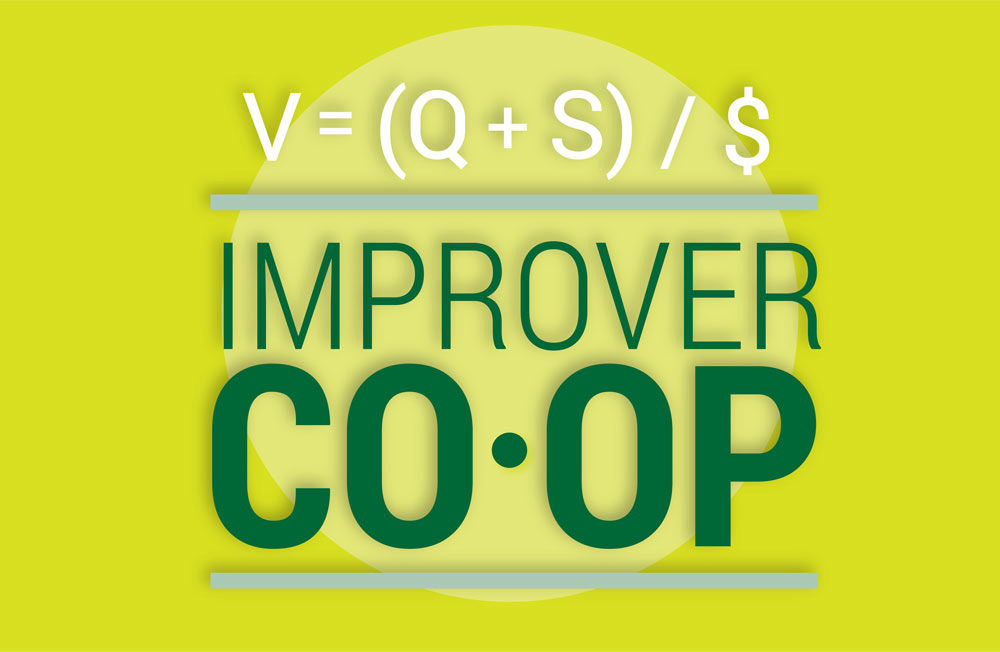ccelerate’s Mari Ransco and Kim Mahoney visited the Evidence-Based Council poster session and selected two projects to feature. These projects represent important improvement principles: inclusion of people who do the work and a structured methodology to guide design.
What was the project?
Mammogram Wars: Increasing Breast Cancer Screening Rates at Redwood Health Center
Emily C. Carlson, MHA; Teresa Stone, RN; Hugh Stoneburner, MD; Julie Day, MD; Annie Mervis, MSW; Community Physicians Group Quality
At Redwood Health Center, three internal medicine providers (Drs. Stoneburner, Kottarathil, and Murnin) worked with an interprofessional team to increase mammogram screenings. Quality improvement specialist Emily Carlson led the team’s analysis and strategy. In addition to adding reminders in Epic, Carlson created the game “Mammogram Wars.” Physicians and their respective teams competed for the highest number of mammograms every month. The winning team earned lunch. Screening rates steadily improved over six months, and Redwood Health Center added three extra days of mammogram appointments to accommodate the additional volume.
What I Learned
1. You can’t just “tell them to tell the patients”
Carlson and the team quickly realized that the entire team—physicians, medical assistants and medical secretaries—all needed to feel ownership of the project. They needed to understand the importance of breast cancer screening and be ready to communicate the message with patients. But just understanding wasn’t enough, and the intervention couldn’t rely on reminding the medical assistants to tell patients to schedule a mammogram. “I learned that everyone has to be engaged,” reflected Carlson. “It’s not just the physicians who must be interested. The success of the project relies on everyone feeling ownership.” The game provided a sense of fun and community around a shared goal.
2. Make it easy for the patients
When the medical assistant or physician reminded patients to schedule a mammogram, the patient scheduled the mammogram after their visit. Sometimes the patient waited days for the next available appointment. Carlson and the team wondered if this process inadvertently caused patients to miss their mammogram. Could the process make it easier for the patient? Carlson and the team worked to offer same-day mammogram appointments, and now mammograms are offered during the wait time between check-in and the exam room. Now, the time spent waiting doesn’t feel wasted.
What was the project?
Lauren Wood, MD; Charles White, MD; Susan Saffel-Shrier, MS, RD; Nicholas Cox, PharmD; Adam Harrold, MD; Shirley Belleville; Erin McAdams, MD; Benjamin Brown, MD; Shaun Curran, PA-C; Jennifer Pantelakis, APRN; Jenni Rowley, APRN; Sheryl Nelson, MA; Michael Black, MA
Dr. Lauren Wood is a third-year resident in the Department of Family and Preventive Medicine. She led the effort to improve urine microalbumin screening rates in diabetic patients. Wood collaborated with an interprofessional team of physicians, advanced practice clinicians, a pharmacist, dietician and medical assistants at Sugarhouse Health Center. Their goal: increase screening for renal disease in diabetic patients. They followed Utah’s improvement methodology to design patient education and alerts to screen the appropriate patients. While the team tried several different solutions, they found that their interventions did not increase screening rates.
Why Value Skills?
The Bobcast with Susan Pohl
In case you missed it, learn how Dr. Susan Pohl leads the Department of Family and Preventive Medicine residency program improvement curriculum.
What I Learned
1. A transferrable skill
Wood believes she will be a better provider because of the improvement skills she learned at Utah. “I came to the University of Utah’s Department of Family and Preventive Medicine residency program because of their strong improvement curriculum,” reflects Wood. “It was the only program that really emphasized curiosity and an ongoing desire to offer high-quality care and commitment to decrease cost. This work taught me a skill that I’m taking with me when I graduate this summer. Working in the clinic with different roles taught me to see process as it is actually happening. That skill is transferrable to my new team.”
2. The importance of the team
For Wood, including the team was the most important guidance from the improvement methodology. She commented, “I didn’t see everything as a provider, so having the perspective of each team member was especially invaluable. The feedback helped to design a project that was more well-rounded. I learned about the importance of building community with the team.”
But teamwork relies on the individuals, and staff turnover stymied progress. Wood remembered, “During the course of our project, there was a new lead nurse, a new clinic manager and a number of new medical assistants. Our new process relied on the nurse, and the task was an extra duty on top of the normal everyday responsibilities. It was understandably overwhelming to start a job and be told ‘remember to do this other thing too.’”
Join the Movement
The Evidence-Based Practice Council is a strong, diverse group of clinicians at University of Utah Health dedicated to fostering improvement and research skills.
The council convenes monthly for lunch and learn sessions, as well as conducts the annual Evidence-Based Practice Poster Fair and other regional improvement meetings.
Learn more about the council and it's founder Sue Childress here.
Emily Carlson
Lauren Wood
Depression is one of those problems so big and so pervasive that tackling it seems impossible. That's why process improvement is so powerful: by setting one goal—improving depression screening rates—11 U of U Health Community Clinics are making the impossible manageable.
Learners, patients, and teachers are more confident and inspired when we take time to create positive learning environments. Pediatric endocrinologist Kathleen Timme gives practical advice for integrating key aspects of a positive learning environment into your daily interactions.
To celebrate the New Year, Value Engineer Mitch Cannon applied statistics to weight loss. He was quickly reminded of an important lesson that applies in health care: when you’re trying to improve, don’t overreact to data.
